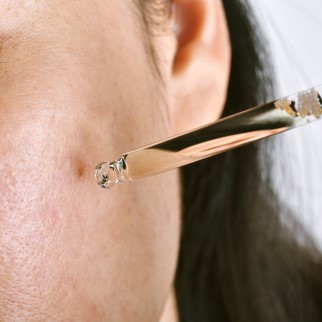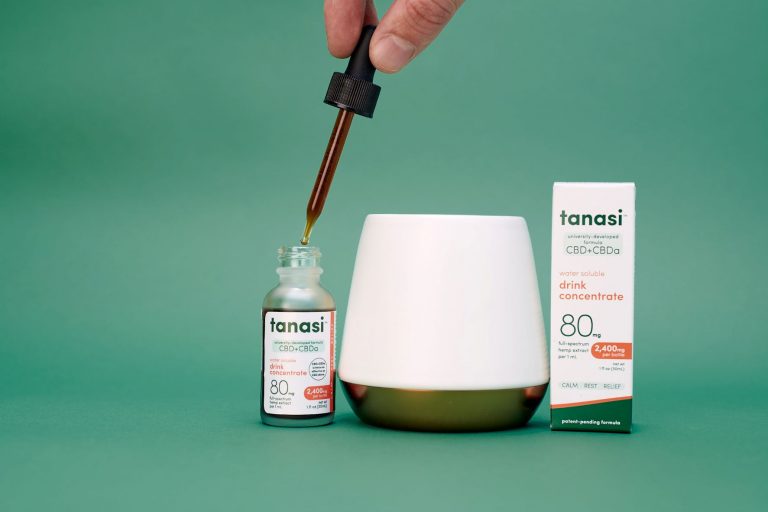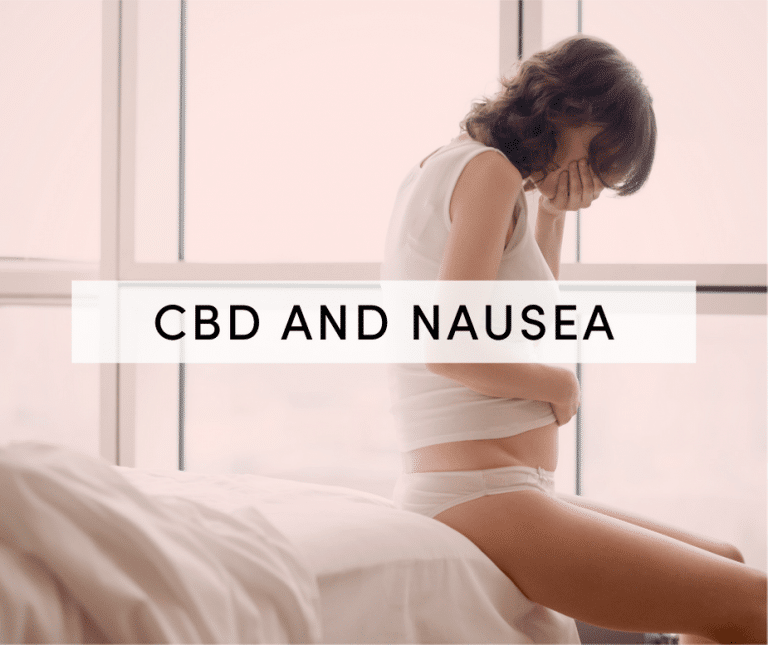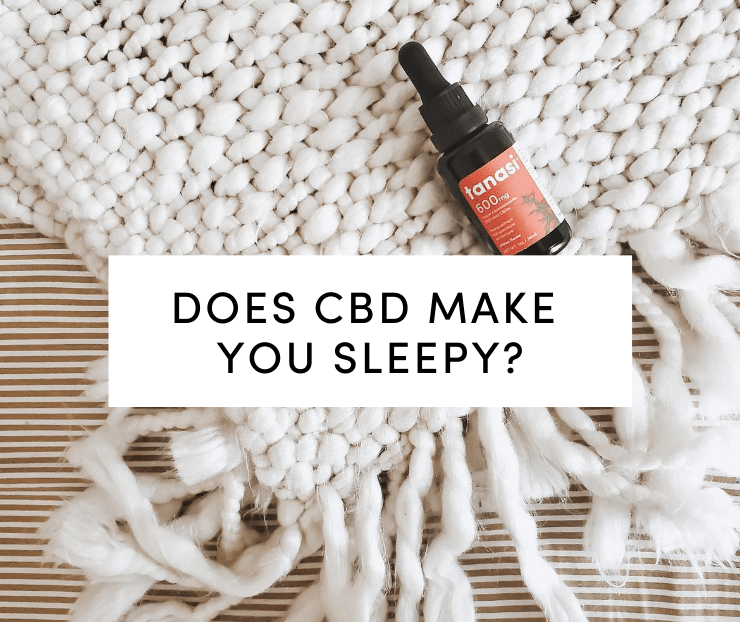What Type Of CBD is Best For Migraines?
Posted on March 29th, 2022
More than 39 million people in the U.S. suffer from migraines. This severe pain is so debilitating that it can make you unable to work or go about your regular activities. The good news is that some people can manage their migraines with CBD. But what type of CBD is best for migraines? Keep reading to find out!
What Are Migraines?

Migraines are neurovascular headaches, which means they affect both your nerves and your blood vessels. The pain is so severe that it can cause you to feel nauseated and make you vomit. It is more than just another headache.
Typically, a migraine develops in four stages. These are the prodrome, aura, the actual attack, and the postdrome.
Prodrome
The prodrome phase can occur a day or two before the actual migraine attack. You might feel subtle changes that are actually warning signs. These include muscle stiffness, fatigue, mood swings and increased irritability. Sometimes, you might feel more thirsty or have cravings for certain foods. Occasionally, people feel constipated or need to urinate more frequently.
Aura
In the aura phase, you experience a build-up of neurological symptoms. You can feel these symptoms before or during your migraine. Next, you might experience blurry vision. Or, your limbs might feel a prickly sensation. Finally, your face or a side of your body might feel numb. And these symptoms can last from 20 minutes to an hour.
Migraine Attack
As the symptoms in the aura phase subside, the actual migraine attack can start within the hour. The migraine can release inflammatory agents that cause throbbing pain on one or both sides of your head. During this time, you feel nauseated. You might become hypersensitive to sound and light. For some people, smells and touch are upsetting. If you do not treat the migraine, it can last up to three days before the symptoms ease.
Postdrome
Some people refer to the postdrome as the migraine hangover. After the attack eases, the postdrome phase kicks in and lasts for the next day or two. During this time, you might feel exhausted. Plus, you might feel confused or unable to focus. For some people, this is a period of strong emotions, either depression or euphoria. Your head might still hurt briefly if you suddenly move it.
Why Do You Get Migraines?
Studies show that genetics play a big part in determining who is more vulnerable to migraines. If you suffer from migraines, chances are that they run in your family. If one parent has it, you have a 50 percent chance of getting it too. The percentage goes up to 75 percent if both parents suffer from migraines. Migraines can start at any time in a person’s life. 10 percent of children have migraines, but they often first occur during adolescence. Women are more prone than men to experience migraines.
There are other factors in your life that also impact how frequently they occur or how intense they get.
Other Migraine Triggers
Different people experience different degrees of migraines. Some people have them every now and then while others experience them every day. The frequency depends on the level of their threshold on how susceptible they are to triggers. The lower the level of threshold, the more frequent the attacks.
The pain pathway of a migraine resides in your trigeminal nerve, or the fifth cranial nerve. This nerve starts in your brain and runs through your head. When your face feels certain sensations or pain, this nerve sends signals to your brain. Overstimulation of sensory nerves can lead to migraines. When there are imbalances in neurotransmitters that regulate pain, such as serotonin, that can affect migraines.
Other triggers can include:
– Hormonal changes
– Medications
– Stress
– Alcohol
– Certain foods or additives
– Stimuli like loud noises, bright lights, strong odors from paint or perfumes
– Intense physical activity
– Weather changes that impact atmospheric pressure
– Inconsistent sleep patterns
Researchers report that CBD may decrease the symptoms of migraines.
What is CBD?
CBD is short for Cannabidiol. It is a cannabinoid, or plant compound, that occurs in the Cannabis sativa plant. Cannabis contains over 100 cannabinoids.
CBD has potential therapeutic properties that may help manage pain. It does so by interacting with the receptors in your central nervous system. Then, it can interact with your brain’s chemical receptors, affecting how they respond to serotonin. In turn, the cannabidiol can help restore your internal balance, so your migraine symptoms are less severe.
Types of CBD
There are three types of CBD: full-spectrum, broad-spectrum and isolate.
Full Spectrum
Full-spectrum CBD contains all of the Cannabis plant’s cannabinoids. It can have up to 0.3% of THC, which is the cannabinoid that can cause you to feel “high”. However, at this low amount, full-spectrum CBD is not psychoactive. Because of the multiple compounds, full-spectrum CBD is the most potent of the three CBD types and may help manage a wide range of health issues. The theory is that when these compounds work in synergy, they produce more therapeutic benefits than if each one worked by itself. This is also known as the entourage effect.
Broad Spectrum
Broad-spectrum CBD also contains other cannabinoids and has some entourage effect, but to a lesser degree compared to full spectrum. It does not contain THC.
CBD Isolate
CBD isolate is CBD in its pure form. It has no other cannabinoids. The isolate goes through additional processing in order to extract the pure, refined product.
Because it doesn’t deliver the entourage effect, the benefits might be less noticeable than that of a full-spectrum CBD product. However, there are situations when an individual requires a high dosage of CBD in order to get a level of pain relief. Using an isolate will ensure that other compounds will not skew the results of the CBD. ALso, there are people who might be sensitive to the other CBD compounds, so isolate is the ideal choice for them.
Topicals, Tinctures, and Edibles
You can find CBD in many consumer products. How you take CBD depends on your personal preference and how quickly you want to experience the benefits.
Topicals
These are lotions or patches that you apply to your skin. Patches release CBD through your skin and into the bloodstream over a length of time. Lotions can treat just the areas that require pain relief such as achy joints and abdominal cramps. The effects from patches spread out more in the general area. Some people are sensitive to skin products, and it can CBD a while to absorb into the skin for you to feel its benefits.
Tinctures
CBD tinctures are a blend of CBD oil and a carrier oil. You place drops of the tincture under your tongue. Your soft tissues absorb the CBD into your bloodstream. You can expect to feel the effects within 30 minutes. It is the second quickest way to get the CBD benefits, after vaping.
Edibles
Edibles include anything that you ingest. These include drinks, capsules, gummies, candies, and food products. It is an easy way to take a dose of CBD. Because the edible has to go through the digestive process, it can take a bit longer to feel the CBD effects, but the effects also last longer. With that said, what you eat can impact how much CBD your body actually absorbs.
What Type of CBD Is Best For Migraines?

A full-spectrum CBD product is likely the most effective for managing a migraine. Full-spectrum provides you the widest range of benefits from the synergy of the compounds. The entourage effect can help control the nausea you experience and reduce inflammation of the blood vessels that is causing your head to throb. A full-spectrum CBD product provides effective antiemetic, anti-inflammatory, and analgesic benefits for migraines.
If you are in the prodrome stage, you can take CBD as an edible to allow the CBD properties to gradually work in your body to alleviate the symptoms or reduce effects of the triggers. The benefits are long lasting as the CBD works through your digestive process.
If you are experiencing an attack and require quick relief, taking a full spectrum CBD in tincture form would be more effective because you can feel the benefits within 30 minutes.
With a better understanding of how migraines develop, you can find the appropriate source of relief. When you recognize these symptoms and intervene, you may avoid terrible pain and debilitation. You can use CBD to decrease the suffering you feel and shorten the cycle of the migraine. As with any supplements, check with your healthcare provider to discuss if CBD is right for you.
References
https://www.mayoclinic.org/diseases-conditions/migraine-headache/symptoms-causes/syc-20360201
https://www.eehealth.org/blog/2019/09/cbd-oil/
https://www.medicalnewstoday.com/articles/321653
https://www.medicalnewstoday.com/articles/cbd-isolate-vs-full-spectrum-cbd
https://www.cnet.com/health/nutrition/cbd-products-explained/
https://www.verywellhealth.com/cbd-oil-for-migraines-4570929





